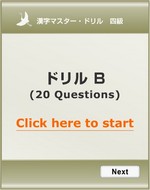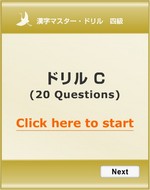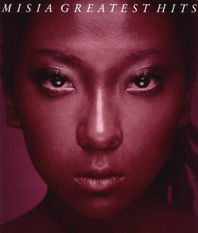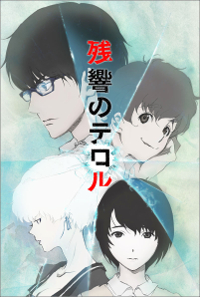Part 7: 私 名 家 父 母 男 女 子 生 友
私 : シ、わたくし
Meaning: I Shape: 禾 + ム
|
Click to see the stroke order animation.
| Word | Reading | Meaning | Class |
|---|---|---|---|
| 私 | わたし | I | n |
私は日本人です。<I am Japanese.> |
|||
| 私 | わたくし | I | n |
Very polite way of saying "I". It is used at the formal situation. |
|||
名 : ミョウ、メイ、な
Meaning: name Shape: 夕 + 口. Identifying oneself by speach(口) in the dark(夕).
|
| 名前 | なまえ | name | n |
| [平仮]名 | ひらがな | Hiragana alphabet | n |
| [片仮]名 | かたかな | Katakana alphabet | n |
| [有]名 | ゆうめい | famous | n, na-adj |
|
かのじょは 有名になりました。<She became famous.> By adding な, it functions as adjective. It is called na-adjective<ナ形容詞>. かのじょは、有名な いしゃです。<She is a famous doctor.> |
|||
家 : カ、ケ、いえ、や
Meaning: house Shape: Covering pigs (豚) or valuable things by the roof (ukanmuri).
|
| 家 | いえ | house | n |
| 家[族] | かぞく | family | n |
| 家[庭] | かてい | household, home | n |
父 : フ、ちち
Meaning: father Shape: A man holding an ax.
|
| 父 | ちち | father | n |
Used to refer one's own father. 私の父は、エジプト人です。<My father is Egyptian.> |
|||
| お父さん | おとうさん | father | n |
Used to refer someone's father. あなたのお父さんは、先生ですか。<Is your father a teacher?> |
|||
| [伯]父さん | おじさん | uncle | n |
Elder brother of one's father or mother. |
|||
| [叔]父さん | おじさん | uncle | n |
Younger brother of one's father or mother. |
|||
母 : ボ、はは
Meaning: mother Shape: A woman with nipples.
|
| 母 | はは | mother | n |
Used to refer one's own mother. |
|||
| お母さん | おかあさん | mother | n |
Used to refer someone's mother. |
|||
| [伯]母さん | おばさん | aunt | n |
Elder sister of one's father or mother. |
|||
| [叔]母さん | げんき | aunt | n |
Younger sister of one's father or mother. |
|||
男 ダン、ナン、おとこ
|
Meaning: man Shape: 田 + 力. Power(力) on the rice field(田).
|
| 男 | おとこ | man | n |
| 男の子 | おとこのこ | boy | n |
女 : ジョ、ニョ、ニョウ、おんな、め
Meaning: woman Shape: Symbolizing the shape of a woman.
|
| 女 | おんな | woman | n |
| 女の子 | おんなのこ | girl | n |
子 : シ、ス、こ
Meaning: child Shape: Symbolizing the shape of a little child.
|
| 子[供] | こども | child | n |
| お[菓]子 | おかし | confectionery | n |
| [帽]子 | ぼうし | hat, cap | n |
生 : ショウ、セイ、い(きる)、う(まれる)、お(う)、き、なま、は(える)
Meaning: to live, to be born Shape: Symbolizing a new sprout on the ground.
|
| 生まれる | うまれる | to be born | v |
来月、子どもが生まれます。<A child will be born in the next month.> |
|||
| [誕]生日 | たんじょうび | birthday | n |
| 先生 | せんせい | teacher | n |
| 生[徒] | せいと | student | n |
In general, it is used for junior-high and high school students. |
|||
| [学]生 | がくせい | student | n |
In general, it is used for college students. In some cases, it means students of all authorized schools. Example: 学生割引(がくせいわりびき)<student discount> |
|||
| [留学]生 | りゅうがくせい | foreign student | n |
友 : ユウ、とも
Meaning: friend
|
| 友[達] | ともだち | friend | n |
Writing Practice
Printable writing practice sheet is available at Kanji Writing Practice page.
Tips for Beautiful Handwriting (2)
3 types of endings
There are basically 3 ways of ending a stroke - tome (stop), harai (tapered) and hane (turning up).
To identify which type, check with the Kanji font used in the stroke order animation.
When you write with a pen, the difference cannot be seen so much. But just keep the following points in mind.
 |
tome End the stroke with pressure (on the paper). This usually happens for straight lines. |
|---|---|
 |
harai Less and less pressure. Pen tip should be up in the air when finished. This usually happens for curved lines. |
 |
hane Stop at the bottom with pressure, then quickly release the pen tip to the upper left or to the starting position of the next stroke. |
For hane, try not to draw two separate lines. The last part should not be too long.
Many people in Japan use fude pen (brush pen) for the handwriting practice. This pen has a soft tip shaped like a brush. You can experience some taste of calligraphy with it. It is recommended to get one if possible.














